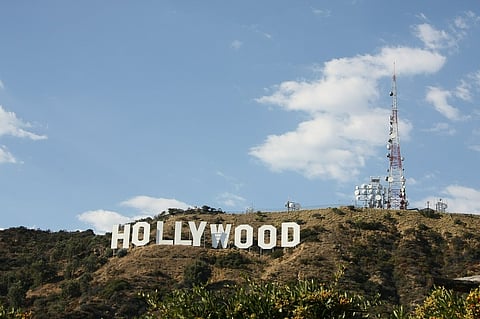

We have all watched films or consumed media produced by Hollywood. Statistically speaking, everyone reading this article has likely seen at least one American movie or is aware of Hollywood as the hub of movie stars. There is no third option.
America prides itself on being a capitalist hegemon where everyone can say what they wish and create whatever they desire, free from coercion. After all, the free market regulates itself, right?
Not quite.
While the United States has no official government ministry regulating speech, it exerts indirect pressure through lucrative contracts, coercion, and influence to ensure that Hollywood portrays America, its government, and its armed forces in a favorable light.
Before 1941, Hollywood primarily produced dramas, tragedies, and comedies that were largely non-political and not intended for a foreign audience. Its films were mainly created for domestic consumption, serving as entertainment for American citizens. They were meant for passing the time and simple enjoyment—much like today. Even 80 years ago, people sought movies as a way to relax or enjoy a night out with a date.
Then, Pearl Harbor happened.
On December 7, 1941, with the world already at war, the United States became a direct participant in the largest conflict in human history. The Japanese Empire launched a surprise attack on the U.S. Navy in Hawaii, resulting in the loss of ships and the deaths of American sailors. This act was both an insult and a provocation that could not be tolerated, and it ultimately led to the complete defeat and dismantling of the Japanese Empire.
But it also led to one more thing—the flourishing of Hollywood.
At the time, the Second World War was forced upon America, and the U.S. government wanted to ingrain that reality into the minds of its citizens—they were now in a state of war. However, the average American, separated by vast oceans and distant continents, might not have felt the war’s presence directly. How, then, could the war be made real to him?
It was a valid question, and it was answered. While an American civilian, unless drafted or volunteering, might never see the battlefield, the war would be brought to him—and that was the job of the U.S. Office of War Information.
Relationships between Hollywood and the United States Armed Forces were cultivated during this conflict. After all, films were the most effective way to convey a message. There were no smartphones, no internet, and other forms of mass communication were cumbersome. This left only radio and motion pictures, and people were far more likely to connect with moving images than with the voice of a faceless radio host.
At the time, 90 million Americans went to the movies at least once a week—an astonishing figure, considering the total U.S. population was only 130 million.
Humans have always been storytellers, and Americans, being no exception, told the story of the war in their own way. They told it well.
The American soldier was portrayed as the guardian of freedom, standing against fascist tyranny and mass murderers. The American way of life was depicted as the objectively correct path, while those who opposed it were cast as the villains. After all, by this logic, why would America ever go to war with the "good guys"?
Suddenly, the fascist mass murderers were defeated, and the guardians of freedom found themselves divided. The Soviet Union, once an ally, was now recast as a communist mass murderer, and the Hollywood machine sprang into action once again.
The Hollywood machine was turned against the USSR. The CIA purchased the rights to Animal Farm, rewrote the script to embed anti-communist messaging, and transformed the film into a propaganda tool aimed at influencing European audiences on both sides of the Berlin Wall. During the Vietnam War, American propaganda engaged in blatant gaslighting, shifting responsibility for massacres and war crimes committed by U.S. forces onto the North Vietnamese. This tactic resurfaced in modern times, such as in the Call of Duty franchise, where the infamous "Death Road" scene was attributed to the Russian army rather than its real perpetrators—U.S. forces during the Iraqi withdrawal from Kuwait.
America convinced its population that it was on a god-given crusade against the immoral communists of Russia—despots who, in turn, funded mini-despots across Latin America, Asia, Africa, and Eastern Europe. Of course, few wish to discuss the disasters that came with this ideological battle: the funding of the Contra wars, the overthrow of the Iranian government to install a pro-Western monarchy, and countless other interventions. So many cases, yet so little time to examine them all in detail.
And then, the USSR was no more—it fell, gutted and relegated to history. But that didn’t mean Hollywood got a break—more wars were on the way!
The enemy was no longer Russian or communist—it was now the terrorist. The Global War on Terror had been ongoing since 9/11, a conflict that could be considered global in its own right. The eerie parallels with Pearl Harbor lingered: once again, American soil and lives were attacked, and those responsible had to be punished.
Massacres in Afghanistan were hidden beneath a veneer of noble intentions. The same playbook unfolded in Iraq. A failed intervention in Libya led to disasters that still haunt the region today. And who even remembers what happened in Sudan in the ’90s? Why bother when you can watch the blue-eyed, blonde-haired American soldier saving children from the evil warlord, flanked by his Israeli attaché and European advisor?
Of course, no nation is without its own sins, but the concentrated effort to sanitize America's image during the GWOT is undeniable. Rules were broken, and violations against civilians who had nothing to do with the conflict were well-documented.
Everyone engages in propaganda—America just does it better.